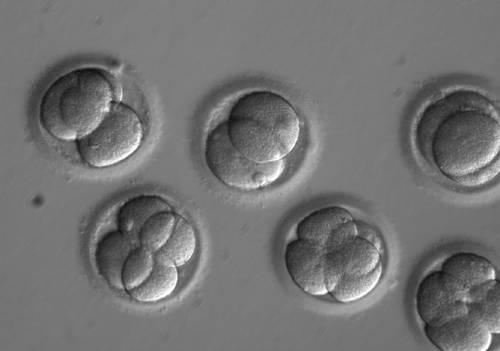Paris. A group of researchers has revealed the mechanisms by which the first cells amalgamate to form the embryo, a discovery that sheds new light on the first stages of human life.
This is the “first study on the mechanics of morphogenesis of the human embryo,” summarizes the work published this Wednesday in the journal Nature.
A few days after fertilization, when the encounter between the sperm and the egg has already given rise to a stem cell, which has divided into about ten more cells, these come together and agglutinate to form a single unit: it is the embryo in its earliest phase.
Only after that moment will the cells differentiate, gradually giving rise to organs and then to a human form.
This first stage, called “compaction”, is crucial. It is the object of this study, carried out mainly by researcher Julie Firmin and in which the National Center for Scientific Research (CNRS) of France, the National Institute for Research in Health and Medicine (Inserm) and the Curie Institute participated.
Until now, it was thought that the main mechanism of embryo formation was that by which cells stick together, through the adhesion of their walls.
However, according to this study, this factor only plays a secondary role. The most crucial thing is the contraction capacity of each cell, the mechanism by which they pull towards each other.
“You have to imagine a circle of people holding hands” that is closing little by little, he explains to Afp researcher Jean-Léon Maître, who supervised the study.
To reach this conclusion, the researchers examined the cells of several embryos left over from in vitro fertilization and frozen in different phases between three and five days.
The more advanced its state, the greater the contraction capacity of its cells, while the degree of adhesion of the walls remained stable.
Important progress
“What makes the cells stick together is not the amount of glue, but these contraction efforts,” insists Maître, adding that “it is not at all a surprise.”
In the last 20 years, several studies have revealed similar mechanisms in flies and mammals such as mice, although the details vary between animal species and humans.
The study published this Wednesday allows us to better understand the human embryo, although very specific consequences cannot be expected immediately.
It is conceivable that this knowledge will one day facilitate the formation of embryos for in vitro fertilization.
Currently, we choose to implant embryos that have successfully passed this training phase.
This study also marks an important advance in our knowledge of the beginning of human life, an area of research that has accelerated in recent years.
This also includes the recent production of embryo-like structures in the laboratory by several research teams.
These structures, sometimes called “synthetic embryos” although the term is controversial, should allow us to study how cells and then organs differentiate during the first weeks of gestation.
Like these works, the new study aims above all to better understand how a human organism is built, what makes it similar to other animals and what distinguishes it.
It is about, this work concludes, “discovering how nature uses the laws of physics to produce so many forms of life, with their astonishing diversity.”
#Study #sheds #light #formation #human #embryos
– 2024-05-02 17:01:35
